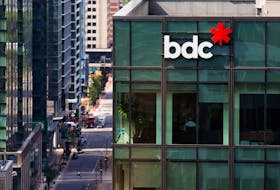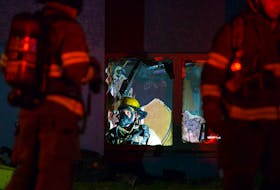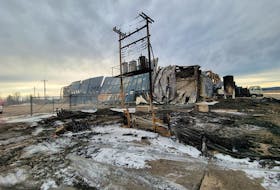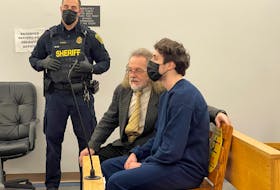EDITOR'S NOTE: The 2020 Nova Scotia municipal elections are over. Winners have been declared and new local governments will soon be sitting across the province. Cape Breton Post Municipal Affairs reporter David Jala put aside his keyboard to delve into the numbers behind the election with a focus on the Cape Breton Regional Municipality.
SYDNEY, N.S. - As a word guy, I admit I’m not always comfortable when surrounded by spreadsheets containing piles of numerical statistics.
Yet, following Saturday’s municipal election, I found myself mired in numbers and percentages. It even became enjoyable as I experienced a pang of excitement each time I pulled out a statistic I thought to be interesting, if not somewhat informative. Okay, some people may prefer to stick with statistics such as Ted Williams lifetime batting average, Wayne Gretzky’s career point total or even how many kilometres it is to their cousin Ned’s place in Dartmouth.
Anyway, here’s a look at what the statistics meant.
Voter participation
Given that the CBRM went fully electronic in this election with voters able to cast their ballots either online or by telephone, it shouldn’t come as a surprise that the voter participation rate of 62.6 per cent was significantly higher than 2016’s rate of 53.3 per cent. The increase was also higher in part due to the fact voting in the province’s second-largest municipality began on Oct. 7 and continued 24/7 until the polls closed at 7 p.m. on Oct. 17.
On a district-to-district basis, there seems no rhyme nor reason as to why some voter participation rates were higher than others. For example, the highest was the sprawling, almost completely rural District 7 which recorded a 69.3 per cent rate. The lowest was Sydney’s entirely urban District 5 in Sydney where just 55.6 per cent of eligible voters cast ballots.
Mayoral race

Six candidates ran for mayor, but it came down to a race between two-term incumbent Cecil Clarke and one-term councillor Amanda McDougall. The latter won by 3,530 votes as she captured 47.5 per cent of the mayoral votes, while Clarke picked up 40.6 per cent of the ballots cast.
Interestingly, on a head-to-head basis, McDougall claimed more votes than Clarke in all but three of the CBRM’s 12 districts. The incumbent, who calls Sydney Mines home, had more votes than the eventual winner in both Northside districts (1 and 2) and in District 11 which comprises New Waterford and area.
The council
With only six council incumbents seeking re-election, voting across the districts was guaranteed to produce some interesting results. As was instantaneously reported a short time after the polls closed on Saturday, only four of the incumbents won. All but two of the districts had more than two candidates, so I took a look at what it took to win in each district.
Of note is that council’s most experienced member, District 10’s Darren Bruckschwaiger, won with the highest percentage of votes. The Dominion resident picked up 80 per cent of the vote, while fellow incumbents Steve Gillespie (District 4) and Earlene McMullin (District 2) placed second and third in that regard with 67.5 and 67 per cent, respectively.

The highest percentage garnered by a new member of the council was Kenny Tracey who captured 63 per cent of the vote in Glace Bay and area’s District 9.
On the other side of the coin, Darren O’Quinn won District 11 with only 29.1 per cent of the vote. True, there were eight candidates with no incumbent in the race. The next lowest was the 29.7 per cent that Steve Parsons garnered to unseat incumbent Ivan Doncaster in District 7 where all four candidates picked up at least 20 per cent of the vote.

Future voting
So, is this the end of paper ballots? Will there be no more Election Day visits to the neighbourhood polling stations? And, with more than one-third of the municipality’s 81,833 eligible voters opting not to cast a ballot, what can be done to get more people voting.
Nova Scotia Municipal Affairs Minister Chuck Porter said he is pleased with the trend of increased participation and credited the rise to electronic voting.
"Early indications are that having phone-in and e-voting options to cast a ballot played an important role in voter turnout," said Porter.
"Our elections need to be accessible to all and I encourage municipalities to continue to look at ways to make voting as easy as possible in 2024."
Cape Breton University professor Tom Urbaniak is known for his thoughtful insights on all things political. He thinks the electronic voting process is likely to be the new normal, at least when it comes to municipal elections.
“I think this system or some version of it is here to stay now, COVID or no COVID,” opined Urbaniak, who added he still harbours some concerns about fraudulent voting within the new system.
“There are some security challenges here and I hope this experience with the widespread, and in some cases universal, electronic or telephone voting will be carefully studied by serious researchers with a few questions including how can we tweak this to ensure immunity against security risks.”
When it comes to voter participation, I called Jim Guy, another CBU political scientist, and asked if he thought the Australia model, where voting in certain elections is compulsory, could work here in Canada.
“It would be controversial for us to do that although my instinct is that it would be okay, but there would be some resistance to that,” said Guy.
Controversy in politics. Hmmm.









